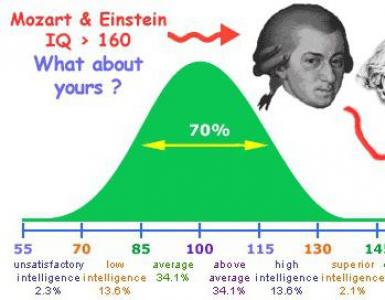What does gpu mean? GPU in a computer - what is it, types
 Hello everyone, GPU is the designation of a video card, or more precisely, a graphics processor. This word, that is, the abbreviation can often be found in some characteristics, for example, in the characteristics of an Intel processor there is such a thing as Integrated GPU, which means built-in video card. Well, that's right, it's actually built-in, the video chip sits right in the processor, this is not news, as it were
Hello everyone, GPU is the designation of a video card, or more precisely, a graphics processor. This word, that is, the abbreviation can often be found in some characteristics, for example, in the characteristics of an Intel processor there is such a thing as Integrated GPU, which means built-in video card. Well, that's right, it's actually built-in, the video chip sits right in the processor, this is not news, as it were
That is, we have already drawn the conclusion that the GPU is a video device. But what else is important to understand? I wrote that the GPU is found in the characteristics, everything is correct, but in addition to this it can also be found in programs that show the temperature. I think that you know such programs.. Well, or you don’t know, in short, in any case, what I’m going to write now will be useful for you to know. So we are talking about GPU temperature. Many people claim that the video camera can work at 80 degrees, but I declare that this is too high a temperature! And in general, I think that above 70 is not the norm!
By the way, GPU stands for Graphics Processing Unit
And here is the graphics chip itself, that is, the GPU, so I pointed it out on the board with arrows:

But what is the normal temperature then? Up to 60 degrees, well, a maximum of 66, well, 70 degrees is already the ceiling... But above that, I think that this is no longer very good, it’s just that such a temperature will definitely not extend the service life, do you agree with me? Well, there’s also an interesting point, in short, if the video card heats up decently, then damn it also throws its heat into the case, well, it obviously won’t be cool in it, and then the process will get hot, in short, fun! Remember that it is TEMPERATURE that can reduce the life of the device! Here on old motherboards from high temperature electrolytic capacitors exploded.. If you don’t believe me, you can look it up on the Internet for yourself..
Good day to everyone, my dear friends and guests of my blog. Today I would like to talk a little about the hardware of our computers. Please tell me, have you heard about such a thing as a GPU? It turns out that many people are hearing such an abbreviation for the first time.
No matter how trivial it may sound, today we live in the era of computer technology, and sometimes it is difficult to find a person who has no idea how a computer works. So, for example, it is enough for someone to realize that the computer works thanks to the central processing unit (CPU).
Someone will go further and find out that there is also a certain GPU. Such an intricate abbreviation, but similar to the previous one. So let's figure out what a GPU is in a computer, what they are like, and what differences it has with the CPU.
Not a big difference
In simple words, GPU is a graphics processing unit, sometimes called a video card, which is partly a mistake. A video card is a ready-made component device, which includes the processor we are describing. It is capable of processing commands to generate three-dimensional graphics. It is worth noting that it is a key element for this; the performance and various capabilities of the video system as a whole depend on its power.

The GPU has its own distinctive features compared to its CPU sibling. The main difference lies in the architecture on which it is built. The GPU architecture is designed in such a way that it allows you to process large amounts of data more efficiently. The CPU, in turn, processes data and tasks sequentially. Naturally, this feature should not be taken as a minus.
Types of GPUs
There are not many types of graphics processors, one of them is called discrete and is used on separate modules. Such a chip is quite powerful, so it requires a cooling system of radiators, coolers; in particularly loaded systems, liquid cooling can be used.
Today we can observe a significant step in the development of graphics components, this is due to the emergence of a large number of types of GPUs. If previously any computer had to be equipped with discrete graphics in order to have access to games or other graphics applications, now this task can be performed by an IGP - an integrated graphics processor.

Almost every computer (with the exception of servers), be it a laptop or a desktop computer, is now equipped with integrated graphics. The video processor itself is built into the CPU, which can significantly reduce power consumption and the price of the device itself. In addition, such graphics can be in other subtypes, for example: discrete or hybrid-discrete.
The first option involves the most expensive solution, soldering on the motherboard or a separate mobile module. The second option is called hybrid for a reason; in fact, it uses video memory small size, which is soldered on the board, but at the same time is capable of expanding it due to random access memory.
Naturally, such graphic solutions cannot compete with full-fledged discrete video cards, but they are already showing quite good performance. In any case, developers have room to strive; perhaps this solution is the future.
Well, that’s probably all I have. I hope you liked the article! I look forward to seeing you again on my blog. Good luck to you. Bye bye!
The motherboard contains many important components of the computer, which have their own unique names: CPU, GPU, HDD, SSD, RAM, and so on. Each of these abbreviations has its own meaning, but this moment it matters what it is - GPU?
There is a similar name to this term - it is CPU. Many inexperienced users confuse these names, which is incorrect. To begin with, it is worth explaining that the CPU is the central processing unit, which is the brain of the entire system. This abbreviation stands for Central Processor Unit.
However, it is worth knowing that a GPU is also a processor, only a graphics solution. Its task is to process and display images on the screen. The full name of the abbreviation looks like this - Graphic Processing Unit.
With these explanations, you can understand that the GPU is not a central processing unit that only processes graphics-type data. It obeys the protocols of the central processor and, unlike it, has its own logical device. Just like the main processor, the graphics processor has cores, only there are not tens of them, but thousands. This a large number of cores are needed to receive and process data associated with rendering and temporary multiple tasks.

Now that there is already general idea that the GPU is a graphics processor and its task is to process graphic data, we can proceed to the enumeration.
At the moment, there are two types of integrated graphics processors - those integrated into the motherboard and those integrated into the processor.
In the first version, the GPU chip is soldered directly onto the PCB motherboard, and few people know that it is a GPU. It looks like an ordinary black chip, on which there is a brand name, a serial number and a combination of numbers that indicates some parameters. Since such graphic solutions do not have their own memory capacity, they borrow this parameter from RAM, using its capacity.

In the case of a chip built into the processor, it is difficult to see; this can only be done by disassembling the central processor itself. Almost all new generation processors have an additional core, which is called a graphics core. At the same time, the price of the processor does not increase much, but it eliminates the need for a discrete video card.
Built-in graphics processors allow you to save on energy consumption by several tens of percent, which has a positive effect on heat transfer. However, there are also significant disadvantages, and one of them is low performance. Such economical graphics are well suited for working with office programs and applications that do not require large amounts of power.

GPU in a computer - what is it and how to identify it? If previously two types of graphics processors were presented in an integrated form, then you can then consider the option of a discrete video card. Based on this, you can understand that GPU is just a designation for a processor, one of the parts of which is a video card. However, this detail is the most important. The video card board also contains memory chips, capacitors, a connector or connectors for power, a protective casing, a radiator and a cooler.
The difference between an integrated and a discrete video card is that the second one is much more powerful and productive than the built-in version. Firstly, it has its own amount of memory, which directly affects the speed of drawing objects. Secondly, its parameters include an expansion bus, the bit depth of which allows you to increase the throughput for data transfer.
Such graphics adapters require additional power to simply start up and produce high-quality images. Despite all the power, there are also office options for discrete video cards, which are not much different from their integrated counterparts. Gaming options are more powerful in structure and potential, but consume much more energy.
Temperature
For better functioning, you need to know what the GPU in the computer is and its temperature. How to cool the integrated and discrete GPU? To cool the integrated GPU, you just need to place fans in the case, and discrete options have their own cooling system. Depending on how many fans are placed above the chip will tell you how well the chip is cooled.
The cooling system of the video card is quite simple - the chip, with the help of thermal paste applied to it, comes into contact with the heat sink tubes, they go to the radiator, which is cooled using a cooler.
The operating temperature of the chip is no more than 70 degrees; a further increase in temperature can be considered overheating. To prevent the video card from overheating, it is enough to promptly clean the video card from dust and change the thermal paste. In order to find out the current state of the temperature in the video card, just run the appropriate programs, for example, AIDA 64. There you can see the temperature of not only the graphics adapter, but the entire system.
CPUs and GPUs are very similar; they are both made of hundreds of millions of transistors and can process thousands of operations per second. But what exactly is the difference between these two important components of any home computer?
In this article we will try to explain in a very simple and accessible way what is the difference between a CPU and a GPU. But first we need to look at these two processors separately.
The CPU (Central Processing Unit or Central Processing Unit) is often called the “brain” of the computer. Inside the central processor there are about a million transistors, with the help of which various calculations are performed. Home computers typically have processors that have 1 to 4 cores with clock speeds of approximately 1 GHz to 4 GHz.
The processor is powerful because it can do everything. A computer is capable of performing a task because the processor is capable of performing that task. Programmers have been able to achieve this thanks to the wide instruction sets and huge lists of functions shared in modern central processing units.
What is GPU?

A GPU (Graphics Processing Unit or Graphics Processing Unit) is a specialized type of microprocessor optimized for very specific computing and graphics display. The GPU runs at a lower clock speed than the CPU, but has many more processing cores.
You can also say that a GPU is a specialized CPU made for one specific purpose - video rendering. During rendering, the GPU performs simple mathematical calculations a huge number of times. The GPU has thousands of cores that will run simultaneously. While each GPU core is slower than a CPU core, it is still more efficient at performing simple math calculations needed to display graphics. This massive parallelism is what makes the GPU capable of rendering the complex 3D graphics required by modern games.
Difference between CPU and GPU

The GPU can only do a fraction of the things a CPU can do, but it does it at incredible speeds. The GPU will use hundreds of cores to perform urgent calculations on thousands of pixels while rendering complex 3D graphics. But to achieve high speeds, the GPU must perform monotonous operations.
Take, for example, Nvidia GTX 1080. This video card has 2560 shader cores. Thanks to these cores, the Nvidia GTX 1080 can execute 2,560 instructions or operations in one clock cycle. If you want to make the picture 1% brighter, the GPU can handle it without much difficulty. But the quad-core Intel Core i5 central processor can only execute 4 instructions in one clock cycle.
However, CPUs are more flexible than GPUs. Central processing units have a larger instruction set so they can perform a wider range of functions. CPUs also operate at higher maximum clock speeds and have the ability to control the input and output of computer components. For example, the central processing unit can be integrated with virtual memory, which is necessary to run modern operating system. This is exactly what the GPU cannot do.
GPU Computing
Even though GPUs are designed for rendering, they are capable of more. Graphics processing is only a type of repetitive parallel computation. Other tasks, such as Bitcoin mining and password cracking, rely on the same kinds of massive data sets and simple mathematical calculations. This is why some users use video cards for non-graphical operations. This phenomenon is called GPU Computation or GPU computing.
conclusions
In this article we compared CPU and GPU. I think it has become clear to everyone that GPUs and CPUs have similar goals, but are optimized for different calculations. Write your opinion in the comments, I will try to answer.
GPU (Graphics Processing Unit) is a processor designed exclusively for graphics processing and floating point calculations. It primarily exists to ease the workload of the main processor when it comes to demanding games or 3D graphics applications. When you play any game, the GPU is responsible for creating graphics, colors and textures, while the CPU can take care of artificial intelligence or calculations of game mechanics.
What do we look at first when choosing a smartphone? If we ignore the cost for a moment, then first of all we, of course, choose the screen size. Then we are interested in the camera, the amount of RAM, the number of cores and the processor frequency. And here everything is simple: the more, the better, and the less, the worse. However, in modern devices A graphics processor, also known as GPU, is also used. What it is, how it works and why it is important to know about it, we will tell you below.
The GPU architecture is not very different from the CPU architecture, but it is more optimized for efficient graphics processing. If you force the GPU to do any other calculations, it will show its worst side.

Video cards that are connected separately and run at high power exist only in laptops and desktop computers. If we are talking about -devices, then we are talking about integrated graphics and what we call SoC (System-on-a-Chip). For example, the processor has an integrated Adreno 430 graphics processor. The memory it uses for its operation is system memory, while graphics cards in desktop PCs are allocated memory available only to them. True, there are also hybrid chips.
While a CPU with multiple cores runs at high speeds, a GPU has many processor cores that run at low speeds and do little more than compute vertices and pixels. Vertex processing mainly revolves around the coordinate system. The GPU processes geometry tasks by creating three-dimensional space on the screen and allowing objects to move within it.
Pixel processing is more complex process, requiring large computing power. At this point, the GPU applies various layers, applies effects, and does everything to create complex textures and realistic graphics. Once both processes are processed, the result is transferred to the screen of your smartphone or tablet. All this happens millions of times per second while you play a game. 
Of course, this story about the operation of the GPU is very superficial, but it is enough to get a good general idea and be able to carry on a conversation with friends or an electronics seller, or understand why your device gets so hot during the game. Later we will definitely discuss the advantages of certain GPUs when working with specific games and tasks.
Based on materials from AndroidPit













